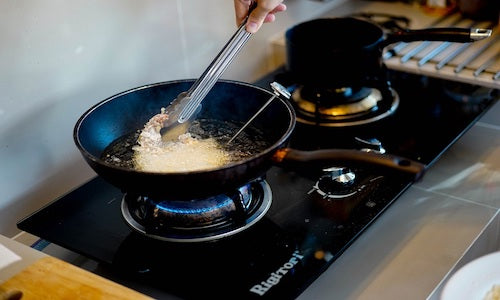
Frying is a core part of traditional cooking techniques, along with stir-frying and roasting. These methods all rely on fats and oils, which not only prevent direct contact between food and cookware but also serve as excellent heat conductors. Frying, in particular, places oil in the spotlight, as it transforms coated ingredients into flavorful dishes.
With so many vegetable oils available on the market today—peanut oil, salad oil, corn oil, canola oil, sunflower oil, olive oil—it can be overwhelming to choose the best one for frying. Surprisingly, it's not peanut or salad oil that works best. The answer is corn oil, and here’s why it excels in five key areas.
1. Affordable Price
For budget-conscious households, cost is always a consideration. Frying uses a large amount of oil, making affordability a primary concern. Among the various oils suitable for frying, corn oil stands out as one of the most cost-effective options.
2. No Strong Odor
Unlike soybean or canola oil, corn oil has a light, neutral scent, which won’t overpower the natural flavors of your food. While oils like peanut or sunflower oil carry a heavy fragrance, corn oil allows your ingredients to shine without masking their original taste.
3. Helps with Browning
Corn oil excels at producing that perfect golden-brown crust on fried foods. Compared to other oils like soybean oil, which may not brown food as well, corn oil ensures your dishes have the best visual appeal, giving them a crispy, appetizing look.
4. Stable and Safe
One of corn oil’s biggest advantages is its stability during high-heat cooking. It’s less likely to produce harmful compounds when heated, making it a healthier choice for frying. Its stable nature also ensures that fried foods turn out crispy and flavorful.
5. Low Smoke Production
With a relatively high smoke point, corn oil minimizes the amount of smoke generated during frying. This is crucial for maintaining a clean and healthy kitchen environment, as excessive smoke from low smoke-point oils can pose health risks.
Smoke Point
One of the most crucial physical feature of cooking oils is its smoke point – the temperature at which an oil starts breaking down and producing smoke. The higher an oil's smoke point, the more heat it can tolerate before the smoke starts. Once oil reaches its smoke point, it can produce unpleasant flavors and odors that can ruin the food you're cooking. While low-heat oils like sesame oil or flaxseed oil can find a place in dressings and sauces, medium- or high-heat oils are typically better for frying.
Smoke Points of Common Cooking Oils:
- Extra Virgin Olive Oil: 325 degrees Fahrenheit
- Canola Oil: 400 degrees Fahrenheit
- Corn Oil: 450 degrees Fahrenheit
- Soybean Oil: 450 degrees Fahrenheit
- Peanut Oil: 450 degrees Fahrenheit
- Avocado Oil: 520 degrees Fahrenheit
In summary, corn oil is the best choice for frying due to its affordability, neutral flavor, ability to help with browning, stability at high temperatures, and low smoke production. Additionally, its nutrient-rich profile, including healthy unsaturated fatty acids, which makes it a healthier add-on for frequent frying. 
At ChefCoca, we offers a range of fryers, including electric deep fryers, natural gas fryers, liquid propane fryers, floor fryers, and countertop fryers. With high-quality products and competitive prices, ChefCoca enhances the oil-frying experience in commercial kitchens, helping you create perfectly fried dishes with ease.


